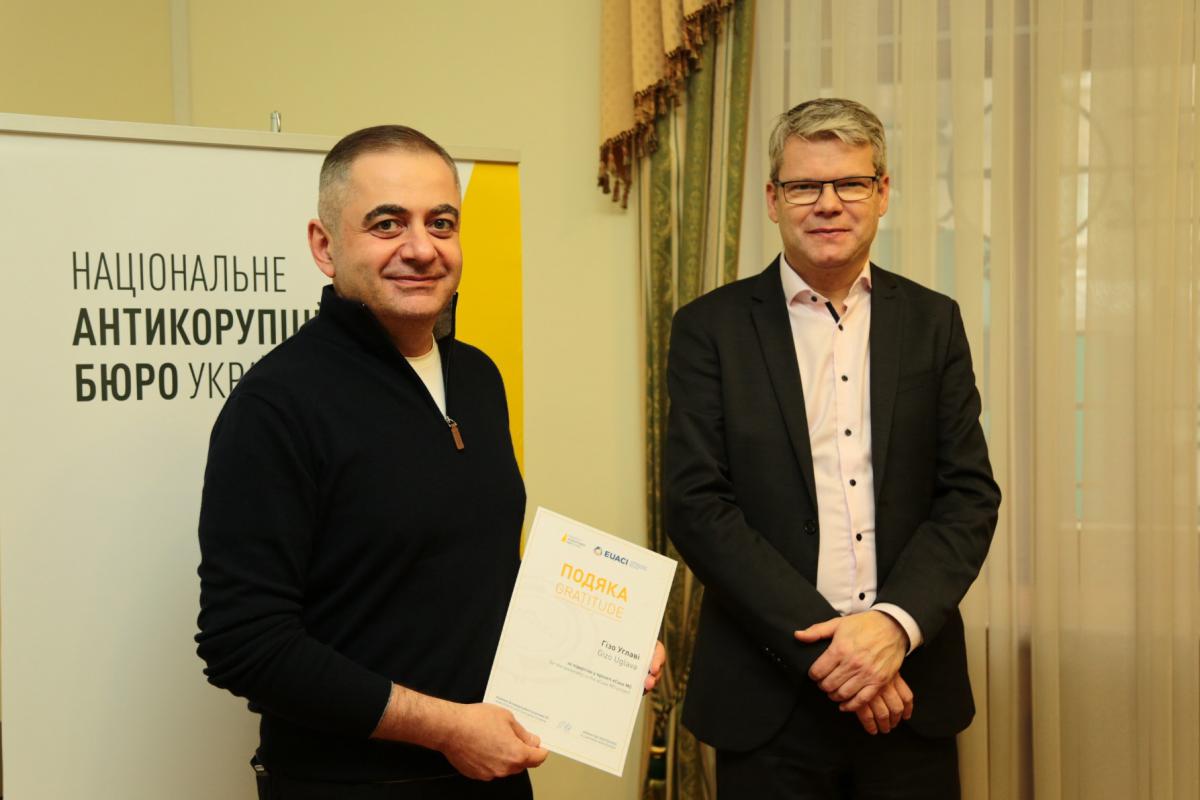First year of eCase MS: achievements and near-term plans
Despite a 5-month break caused by russia’s full-scale invasion, the operation of the eCase MS electronic criminal proceedings system was resumed on August 1, 2022. As of Dec. 20, 2022, it contains information on 306 criminal proceedings. Each day, more and more users from NABU and SAPO join the eCase MS, while the e-document generated by the system has undergone procedural validation in court.
“The success of this project depends on the effective work of its team, which includes not only NABU employees but also partner institutions. We appreciate everyone's contribution and sincerely thank the EU Anti-Corruption Initiative for support. Despite a forced break in the development of the system, we are confidently moving towards our goal, the full digitalization of the criminal process,” Gizo Uglava, NABU’s acting director, said at the meeting with the eCase MS project team.
The eCase MS was launched at NABU on December 16, 2021. Its development started in 2019 with the technical, expert, and financial support of the European Union Anti-Corruption Initiative in Ukraine (EUACI). On the launch anniversary, Allan Pagh Kristensen, the head of EUACI, thanked NABU, SAPO, HACC, and EUACI for their contribution to the development of the project.
"I am grateful to those who believed in the system from the very beginning, who were its ambassadors, and who invested their resources and working hours in ensuring its development. Today, the eCase MS is a flagship IT project of our program, and I assure you that EUACI will continue to support it”, Allan Pagh Kristensen noted.
By the end of 2022, the integration of the system with the Unified Register of Pretrial Investigations will have been completed. The eCase MS integration with the "D-3" court system is also at the finish line. This will enable detectives to file motions with the High Anti-Corruption Court in electronic format. Next year, the eCase MS project team plans to add more than 30 templates of procedural documents, step up the integration with the D-3 system, and develop a technical task for an updated release of the system.
As reported, the system provides for the gradual transition from the paper-based criminal process with the participation of the National Bureau, the Specialized Anti-Corruption Prosecutor's Office, and the High Anti-Corruption Court to electronic format. Such a step is intended to increase the efficiency of investigations, ensure the transparency of anti-corruption bodies and save resources.







